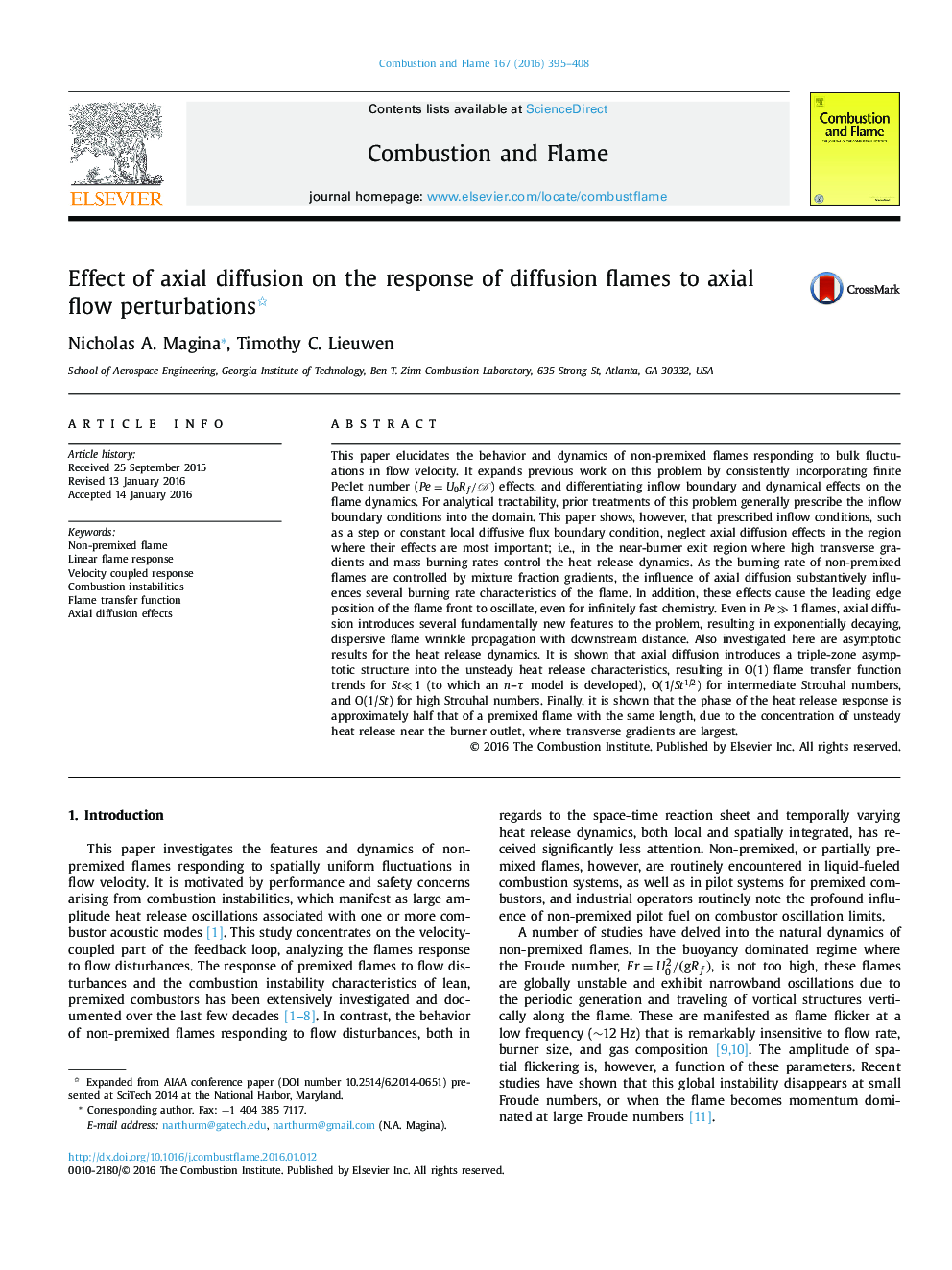| کد مقاله | کد نشریه | سال انتشار | مقاله انگلیسی | نسخه تمام متن |
|---|---|---|---|---|
| 6594134 | 457933 | 2016 | 14 صفحه PDF | دانلود رایگان |
عنوان انگلیسی مقاله ISI
Effect of axial diffusion on the response of diffusion flames to axial flow perturbations
ترجمه فارسی عنوان
اثر انتشار محوری بر پاسخ شعله های نفوذ به اختلالات جریان محوری
دانلود مقاله + سفارش ترجمه
دانلود مقاله ISI انگلیسی
رایگان برای ایرانیان
کلمات کلیدی
شعله غیرمعمول، پاسخ شعله خطی، سرعت پاسخ متقابل، ناپایداری احتراق، عملکرد انتقال شعله، اثرات افقی انتشار،
موضوعات مرتبط
مهندسی و علوم پایه
مهندسی شیمی
مهندسی شیمی (عمومی)
چکیده انگلیسی
This paper elucidates the behavior and dynamics of non-premixed flames responding to bulk fluctuations in flow velocity. It expands previous work on this problem by consistently incorporating finite Peclet number () effects, and differentiating inflow boundary and dynamical effects on the flame dynamics. For analytical tractability, prior treatments of this problem generally prescribe the inflow boundary conditions into the domain. This paper shows, however, that prescribed inflow conditions, such as a step or constant local diffusive flux boundary condition, neglect axial diffusion effects in the region where their effects are most important; i.e., in the near-burner exit region where high transverse gradients and mass burning rates control the heat release dynamics. As the burning rate of non-premixed flames are controlled by mixture fraction gradients, the influence of axial diffusion substantively influences several burning rate characteristics of the flame. In addition, these effects cause the leading edge position of the flame front to oscillate, even for infinitely fast chemistry. Even in Pe â«Â 1 flames, axial diffusion introduces several fundamentally new features to the problem, resulting in exponentially decaying, dispersive flame wrinkle propagation with downstream distance. Also investigated here are asymptotic results for the heat release dynamics. It is shown that axial diffusion introduces a triple-zone asymptotic structure into the unsteady heat release characteristics, resulting in O(1) flame transfer function trends for StâªÂ 1 (to which an n-Ï model is developed), O(1/St1/2) for intermediate Strouhal numbers, and O(1/St) for high Strouhal numbers. Finally, it is shown that the phase of the heat release response is approximately half that of a premixed flame with the same length, due to the concentration of unsteady heat release near the burner outlet, where transverse gradients are largest.
ناشر
Database: Elsevier - ScienceDirect (ساینس دایرکت)
Journal: Combustion and Flame - Volume 167, May 2016, Pages 395-408
Journal: Combustion and Flame - Volume 167, May 2016, Pages 395-408
نویسندگان
Nicholas A. Magina, Timothy C. Lieuwen,
